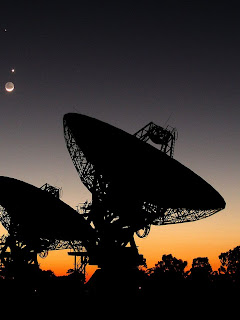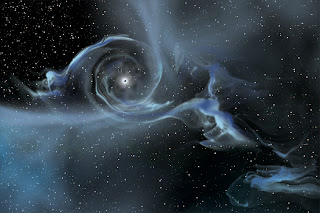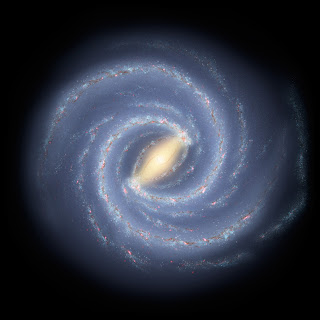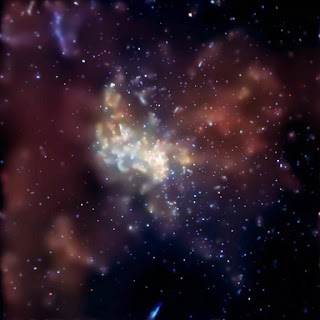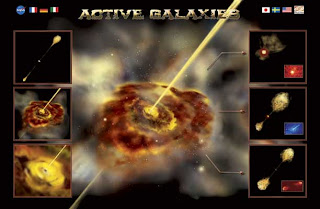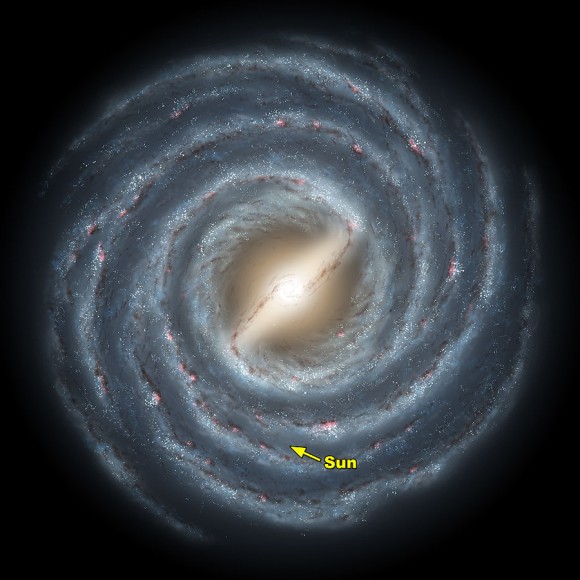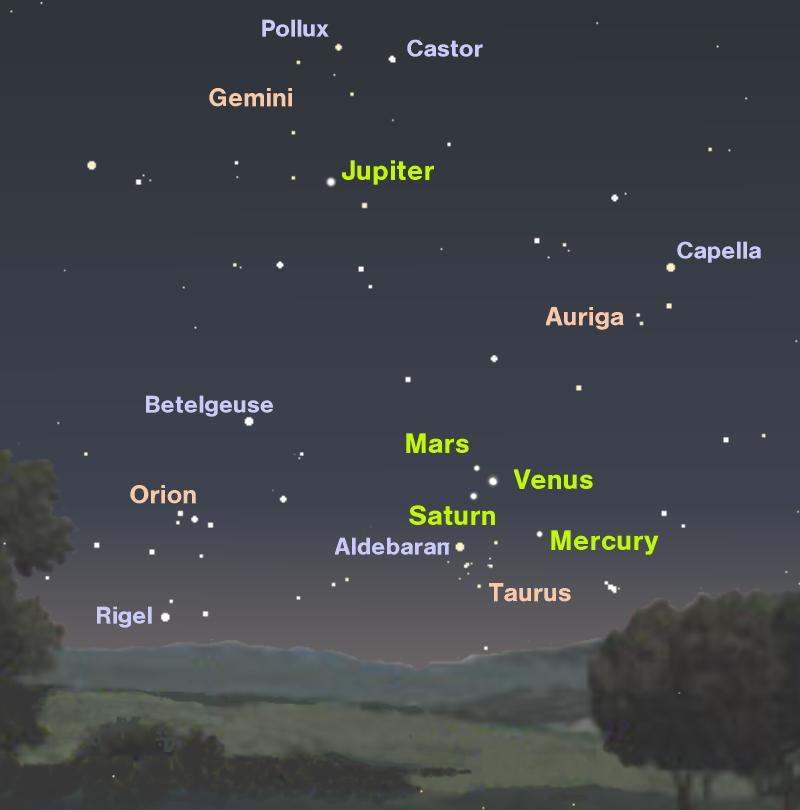Light is simply a name for a range of electromagnetic radiation that can be detected by the human eye. What is electromagnetic radiation, then?
Electromagnetic radiation has a dual nature as both particles and waves. One way to look at it is as changing electric and magnetic fields which propagate through space, forming an electromagnetic wave. [illustration] This wave has amplitude, which is the brightness of the light, wavelength, which is the color of the light, and an angle at which it is vibrating, called polarization. This was the classical interpretation, crystallized in Maxwell's Equations, which held sway until Planck, Einstein and others came along with quantum theory. In terms of the modern quantum theory, electromagnetic radiation consists of particles called photons, which are packets ("quanta") of energy which move at the speed of light. In this particle view of light, the brightness of the light is the number of photons, the color of the light is the energy contained in each photon, and four numbers (X, Y, Z and T) are the polarization.Which interpretation is correct? Both of them, actually. It turns out electromagnetic radiation can have both wave-like and particle-like properties as demonstrated in experiments such as the dual slit experiment. In this exploration of light, we will primarily take the wave viewpoint as it is a more useful description of the everyday properties of light, but keep in mind that both viewpoints are valid, and sometimes we will use the quantum viewpoint too.
On to the numbers! Light ranges from wavelengths of 7x10-5 cm (red) to 4x10-5 cm (violet) and (like all electromagnetic radiation) travels at the speed of light, 299,792,458 meters per second or 186,282 miles per second. (Interesting fact: the speed of light is actually defined to be 299,792,458 meters per second and scientists combine this with the definition of a second to create the definition of a meter! As stated at the 17th General conference on weights and Measures, "The meter is the length of the path traveled by light in a vacuum during a time interval of 1/299,792,458 of a second.")
The frequency (number of wavelengths per second) of a light wave may be calculated using the equation c=ln where l is the wavelength, n is the frequency and c is the speed of light. In quantum theory, a photon has energy equal to hn, where h is Plank's constant and n is the frequency of the light in classical theory.




